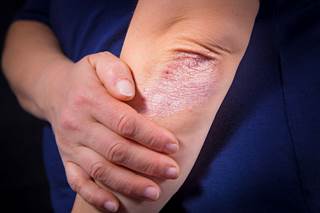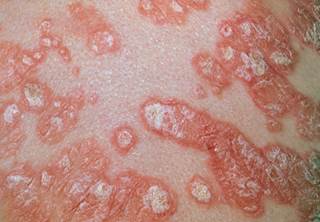
Emerging evidence points to a potential link between H pylori infection and skin diseases including rosacea.
An estimated 25% to 30% of the general population is infected with Helicobacter pylori (H pylori), a gram-negative bacterium that represents a major cause of stomach ulcers and other gastric issues.1 Research findings increasingly suggest a connection between H pylori infection and various other medical conditions, such as Parkinson disease, migraines, and iron deficiency anemia.2 In addition, emerging evidence points to a potential link between H pylori infection and skin diseases including rosacea.
Numerous studies have demonstrated higher rates of H pylori infection in patients with rosacea compared with control subjects. For example, prospective research published in 2015 tested 90 patients with rosacea and 90 control subjects for H pylori (using the 13C Urea Breath Test and H pylori stool antigen test) and found infection rates of 48.9% and 26.7%, respectively (P =.003).1 Similar results were not found for small intestinal bacteria overgrowth.
Within 10 weeks following treatment with clarithromycin-containing sequential therapy, skin lesions had decreased significantly or completely resolved in 97.2% of patients in whom H pylori was eradicated (P <.0001). For cases in which treatment did not eradicate H pylori infection, lesions were reduced or eliminated in 37.5% of patients. These results align with those of many other studies showing a higher prevalence of H pylori in patients with rosacea vs controls and showing resolution of symptoms following eradication of the bacteria.
Among the potential mechanisms underlying these associations, increased levels of reactive oxygen species and nitric oxide by H pylori have been associated with inflammation and vasodilatation in rosacea.3 Other evidence has revealed that “cytotoxin-associated gene A, known as a H pylori virulence factor, facilitated the secretion of proinflammatory cytokines in the gastric epithelium, and the presence of cytotoxin-associated gene A antibodies was observed in patients with rosacea.”3
Several other studies, however, have not found a higher prevalence of H pylori in people with rosacea or an improvement in symptoms after eradication of H pylori. As rosacea is a multifactorial disease, it is possible that H pylori is a contributing factor in certain patients with specific subtypes of the disease. In support of this, some studies have noted a more favorable treatment response among patients with papulopustular rosacea compared with other subtypes.
One such investigation conducted in 2012 found more frequent rates of gastric ulceration and an especially high response to eradication therapy in patients with papulopustular rosacea.4 The study authors concluded that “H pylori plays an important role in rosacea patients with concomitant dyspeptic problems, especially in the papulopustular subtype.”
It is also notable that there are different strains of H pylori with varying levels of virulence, a range of statistical methods and assessments for H pylori have been used in studies on the topic, and the previous use of antibiotics in people with rosacea may influence results.4 These factors may further explain the divergent findings observed across studies. Additional research is needed to clarify these points.
Dermatology Advisor spoke with Suzan Obagi, MD, director of the UPMC Cosmetic Surgery and Skin Health Center and the 2018 president of the American Academy of Cosmetic Surgery, regarding the potential significance of H pylori in rosacea.
Dermatology Advisor: What does the research suggest thus far about associations between rosacea and H pylori, as well as underlying mechanisms?
Dr Obagi: There is growing evidence of the link between what we eat and drink and inflammation in the body and skin. Like the digestive tract, skin is one of the largest organs and has its own immune system, and the link between these 2 systems is becoming clearer. The foods and drinks we consume can alter the gut microbiome, allowing unhealthier bacteria to grow and crowd out the healthier bacteria.
It turns out that the unhealthy bacteria can damage the intestinal lining and cause the gut to become “leaky,” thus allowing substances to enter the bloodstream that should be kept out. These are inflammatory substances, immune triggering proteins, and the very harmful endotoxins produced by bacteria. Additionally, ingesting even moderate amounts of alcohol can reduce the production of healthy bile acids by our gut and thus foster the growth of unhealthy bacteria. Lastly, high glycemic foods can feed the unhealthy bacteria and increase the systemic inflammatory response.
There is growing scientific evidence that gut health is intricately linked with overall health, beyond just skin. We are now finding ties between the microbiome and dementia, diabetes, heart disease, cancer, and skin conditions. H pylori is probably just one small example of this issue. H pylori infection causes stomach ulcers in many people but can be silent in others.
In some patients with active infection, their skin shows symptoms of inflammation such as a rosacea flare. In these people, treating the infection can help clear their skin. However, for some people with rosacea, they have active rosacea and no H pylori infection. That suggests a different contributing factor, and other causes of gut issues should be considered.
We know that there is a link between the skin and the gut in atopic dermatitis, acne, rosacea, and now, based on some convincing studies, probably a link with psoriasis, hidradenitis suppurativa, pyoderma gangrenosum, and inflammatory bowel disease as well.
Dermatology Advisor: What are additional treatment recommendations for clinicians?
Dr Obagi: I think that any clinician who is keeping up with the science is starting to have discussions with their patients about mediating inflammation, which is the root cause of most of the conditions I mentioned above. One of the ways our patients can mitigate inflammation is to improve their overall gut health by taking probiotics (especially after taking antibiotics); eating a low glycemic diet; avoiding inflammatory foods such as dairy, gluten, soy, and peanuts; eliminating sugary drinks; and keeping alcohol intake to a minimum.
Some patients may also require supplementation with vitamins such as quercetin and digestive acids such as bile acids for certain conditions. These suggestions should be implemented in collaboration with the patient’s primary care provider and dermatologist.
Dermatology Advisor: What are some of the remaining research needs in this area?
Dr Obagi: We need more research on a larger population of patients of various ethnicities to see whether this link pans out across ethnically different patients. We are already hearing of universities investing in studying the gut microbiome and using that knowledge to create a clinic to evaluate and treat patients based on this research.
References
1. Gravina A, Federico A, Ruocco E, et al. Helicobacter pylori infection but not small intestinal bacterial overgrowth may play a pathogenic role in rosacea. United European Gastroenterol J. 2015;3(1):17-24.
2. Wong F, Rayner-Hartley E, Byrne MF. Extraintestinal manifestations of Helicobacter pylori: a concise review. World J Gastroenterol. 2014;20(34):11950-11961.
3. Woo YR, Lim JH, Cho DH, Park HJ. Rosacea: molecular mechanisms and management of a chronic cutaneous inflammatory condition. Int J Mol Sci. 2016;17(9):1562.
4. Lazaridou E, Korfitis C, Kemanetzi C, et al. Rosacea and Helicobacter pylori: links and risks. Clin Cosmet Investig Dermatol. 2017; 10(10):305-310.








